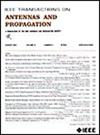900 MHz 射线跟踪路径损耗预测的深度概率机器学习方法
IF 4.6
1区 计算机科学
Q1 ENGINEERING, ELECTRICAL & ELECTRONIC
引用次数: 0
摘要
机器学习(ML)被广泛用于解决无线电传播问题。除了依赖表格数据的模型外,还出现了基于深度学习(DL)的图像驱动模型。然而,路径损耗(PL)预测存在很大的不确定性,因此应将确定性 ML 预测与不确定性预测模型相结合。因此,我们采用了一种概率方法,利用深度概率框架来估计预测区间。概率框架试图解决条件偏差问题,而条件偏差是通过误差最小化获得的确定性 ML 预测的常见特征。具体做法是量化不确定性,进行概率预测,并将稳健优化技术纳入建模过程。目前的工作是将图像和表格数据融合到深度概率集合(DPE)中。更确切地说,我们正在使用自然梯度提升(NGBoost)技术,以便分别从每种输入模态获得概率预测。然后,这些单模态预测会根据其方差的倒数对每个估计点进行集合。从预测误差和不确定性方面来看,与单模态预测相比,所提议模型的结果显示出显著的性能提升。据我们所知,这是首次在概率结构集合模型的基础上结合图像和表格数据来解决电磁学中的 PL 建模问题。本文章由计算机程序翻译,如有差异,请以英文原文为准。
A Deep Probabilistic Machine Learning Approach to Ray Tracing Path Loss Prediction at 900 MHz
Machine Learning (ML) is extensively being used in order to tackle the problem of radio propagation. Besides the models that rely on tabular data, Deep Learning (DL)-based image-driven models have also emerged. However, significant uncertainty is associated with path loss (PL) forecasting and deterministic ML predictions should be combined with a model for predictive uncertainty. As a result, we take a probabilistic approach by estimating prediction intervals using a deep probabilistic framework. The probabilistic framework attempts to address the issue of conditional bias, which frequently characterizes deterministic ML predictions obtained through error minimization. This is accomplished by quantifying uncertainty, making probabilistic predictions, and incorporating robust optimization techniques into the modeling process. The work at hand fuses images and tabular data into a deep probabilistic ensemble (DPE). More precisely, natural gradient boosting (NGBoost) is being used in order to obtain probabilistic predictions from each input modality separately. These unimodal predictions are then ensembled for each estimation point, according to the inverse of their variance. The proposed model’s results show a significant performance boost against the single-mode predictions in terms of prediction error and uncertainty. To the best of our knowledge, this is the first time that images and tabular data are being combined on the basis of a probabilistically structured ensemble model for a PL modeling problem in electromagnetics.
求助全文
通过发布文献求助,成功后即可免费获取论文全文。
去求助
来源期刊
CiteScore
10.40
自引率
28.10%
发文量
968
审稿时长
4.7 months
期刊介绍:
IEEE Transactions on Antennas and Propagation includes theoretical and experimental advances in antennas, including design and development, and in the propagation of electromagnetic waves, including scattering, diffraction, and interaction with continuous media; and applications pertaining to antennas and propagation, such as remote sensing, applied optics, and millimeter and submillimeter wave techniques

 求助内容:
求助内容: 应助结果提醒方式:
应助结果提醒方式:


